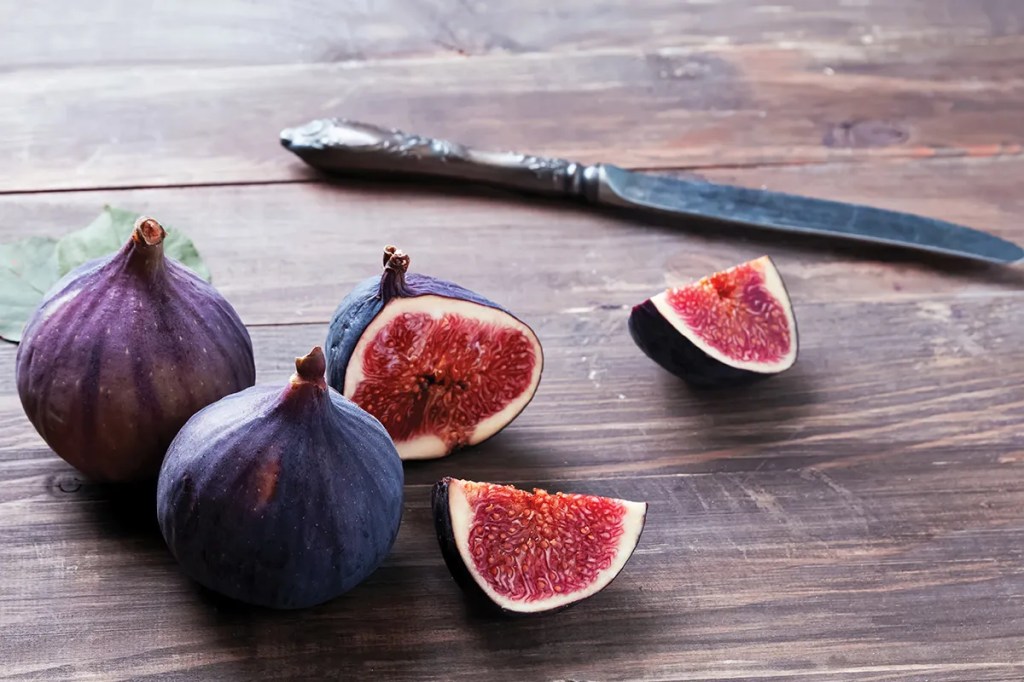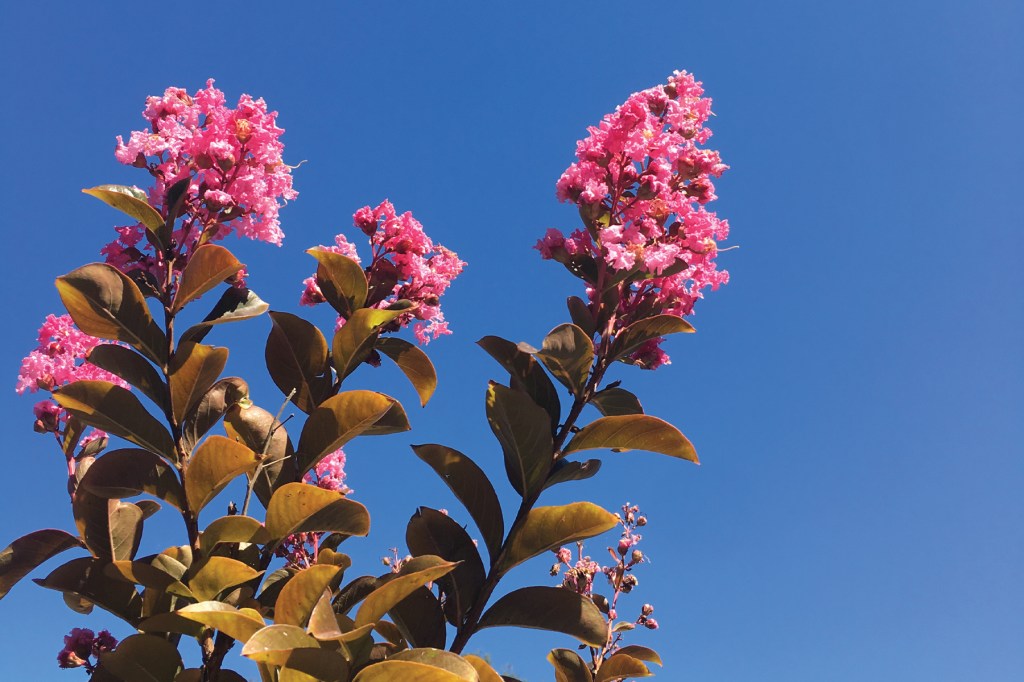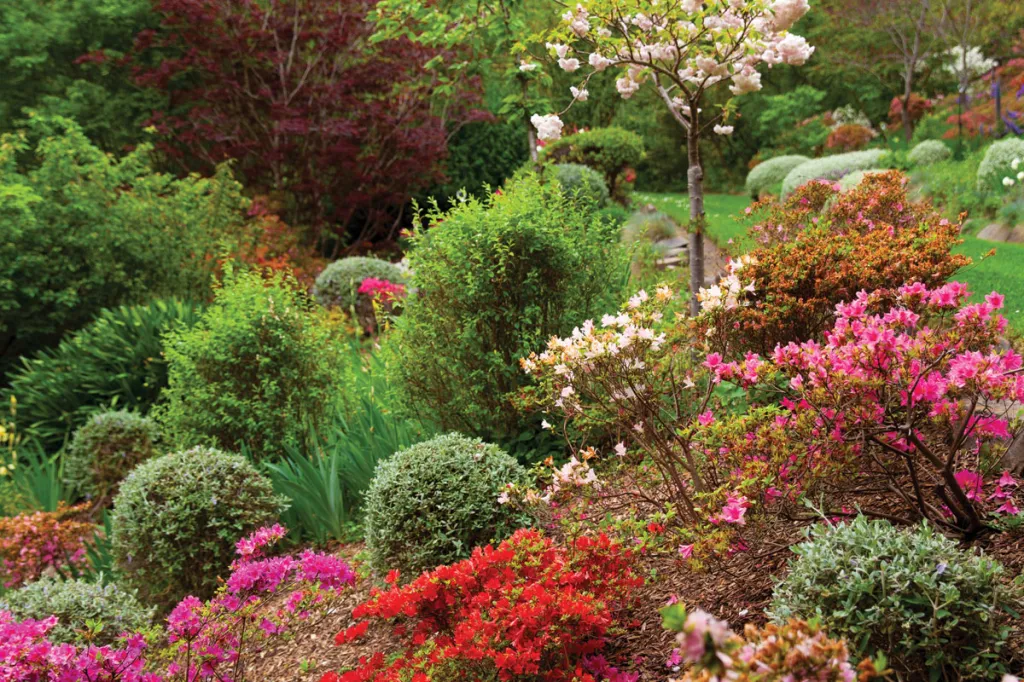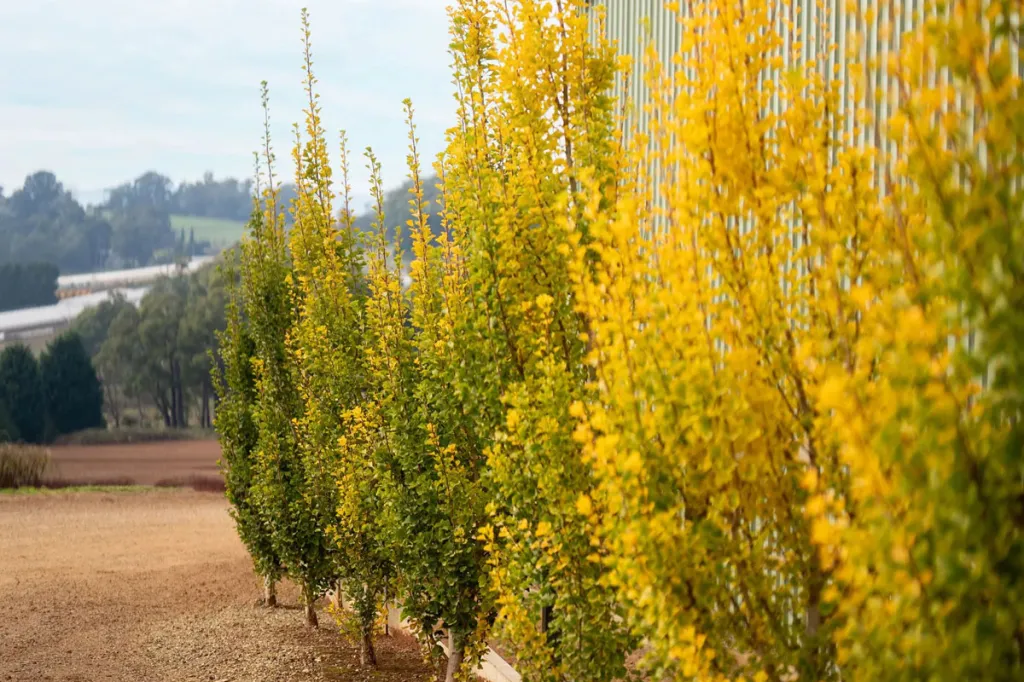Ever reliable and immensely productive, the fig is a South Australian backyard favourite. That they are often found growing happily among the ruins of long abandoned homesteads proves figs are true survivors.
Boasting an ancient lineage and being one of the oldest cultivated plants, figs were revered by the ancient Egyptians, Greeks and Romans in particular, who held them in high regard. In fact, in Greek culture, figs were associated with Bacchus, the god of wine and revelry.
Figs have quite an unusual floral structure. Break open the fruit and you will find its flowers inside. The hundreds of tiny filaments are little florets that, for the fruit to ripen, need to be pollinated.
Most commercial varieties are self-pollinating, however for the 750 known Ficus, or fig, species in the world (45 of which are native to Australia), nearly all have a special relationship with a wasp, essential for pollination.
As the fruit grows on the tree, it emits a scent that attracts female wasps, which then crawl into the fruit spreading pollen and thereby fertilising the internal flowers. Lack of pollination causes fruit to drop off while still young.
Pairing fig species with their own unique wasp is an amazing evolutionary feat.
The reason figs are so productive is because many varieties crop twice; first crop is called the “breba” which develops over spring off older wood. Winter pruning reduces these numbers, but the main crop – or “higos” – is often the more flavoursome crop, picked from new-season growth later in summer.
Due to the fruit’s relatively short shelf life, figs tend to be a little scarce at the supermarket, so to guarantee your fig-fix, grow your own, especially given they are tolerant of alkaline soil and even mildly saline water.
Winter is the perfect time to propagate figs. Take cuttings around 20cm long and even if you only want one plant to grow, bundle up a handful. If more survive you can give them away. Fill a pot with coarse washed sand, then trim the base of each cutting at a 45 degree angle. Dip them into rooting hormone or honey, and push into the sand, leaving the top third exposed. Once all cuttings are planted, place the pot in a protected, shady spot and water every few days, depending on rainfall. Wait until the tops have leaves before carefully lifting and potting in a small container. Once established, they can be planted out.
Your local garden centre carries an excellent selection of ready to plant, self-pollinating figs. Here are two tried-and-true performers:
Black Genoa
Juicy with a rich sweet flavour, turning greenish purple when ripe, the pulp is yellow becoming red at the centre. A wonderful fig for eating fresh from the tree.
Brown Turkey
Richly flavoured, purple-brown skinned fig with reddish amber-coloured flesh. The main crop starts late February. An all-purpose fig suitable for jam, glace, pickling and eating fresh.
The Rare Fruit Society of South Australia has an exceptional collection of commercial, heritage and rare fig varieties, with many offered for sale at their bimonthly meetings.
While figs do exceptionally well in ground, if you don’t have the space or you are concerned the tree may get too aggressive, they also perform admirably in pots. Select a spot that gets at least six hours of sun or more (shady spots only encourage stretched growth and little, if any, fruit). Dig in plenty of well-aged organics or use a premium potting mix if growing in a pot, because the better you prepare the growing area the better your plant will grow.
Subscribe for updates
Belying their tough demeanour, young plants do need a little help to establish. Keep up the watering, especially over summer, where hot northerly winds can desiccate foliage and dry out stems. When feeding, use dedicated fruit fertilisers that contain a nutrient balance. If your fig is putting on lots of foliage and not setting fruit, chances are you are using a fertiliser with too much nitrogen.
Maintaining a small and manageable tree through regular pruning – or planting a dwarfing variety – makes netting to stop birds from devouring your crop so much easier.
Harvest your fruit once it’s soft to touch, has a slight droop and turns green, black, brown or yellow, depending on the variety. Pulling fruit off tears flesh and reduces an already short shelf life, so instead give a gentle twist and if the fig is ripe, it will easily fall into your hand. If picked unripe, the milky sap that oozes from the stem can irritate skin, so consider wearing gloves.
It doesn’t take long to fill a basket each picking and while you can bite into them while still fresh, there is a limit to how many figs can be eaten. Preserving and drying them, uses the largesse and extends your enjoyment of this flavoursome treat for months and months.

Fabulous fig jam
Makes around 1 litre
Ingredients
1.2 kg figs
600g granulated sugar
2 lemons
Sterilised jars and lids
Method
Cut figs in half (but if you like fine jam, then cut into smaller pieces). Place in large bowl and sprinkle over the sugar. Cut and squeeze lemons and pour in the juice. Cover and leave overnight. Transfer ingredients into a preserving pan. Gently heat until sugar has dissolved, increase heat and bring to a rolling boil.
Reduce heat and simmer for 38 to 40 minutes, stirring regularly. When mixture looks thick, remove lemons. Use a potato masher if you want to break up the figs more.
Place into sterilised jars and seal.





